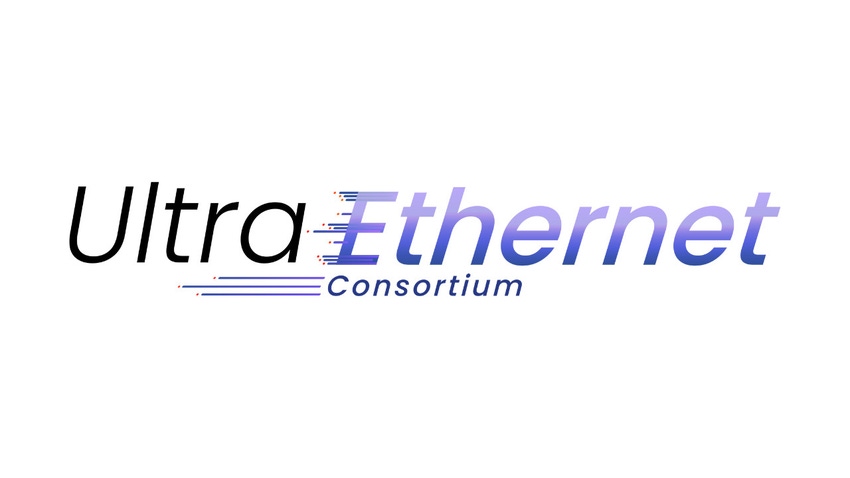Big tech players throw weight behind ‘ultra ethernet’ to meet AI and HPC workloads
The Ultra Ethernet Consortium promises some new stack architecture designed to meet the ‘insatiable’ network demands of AI and high performance computing.
July 20, 2023

The Ultra Ethernet Consortium promises some new stack architecture designed to meet the ‘insatiable’ network demands of AI and high performance computing.
Founding members of the Ultra Ethernet Consortium (a project ‘hosted’ by The Linux Foundation) include AMD, Arista, Broadcom, Cisco, Eviden, HPE, Intel, Meta and Microsoft – so there’s no shortage of tech A-listers there.
It’s mission broadly appears to be about tweaking or improving the ethernet technology/standards, in order to improve performance, with the assertion that this will be needed to keep up with workloads associated with high powered computing (sometimes called supercomputing) and AI.
We’re told these workloads are ‘rapidly evolving’ and the Ultra Ethernet solution stack will ‘capitalize on Ethernet’s ubiquity and flexibility for handling a wide variety of workloads while being scalable and cost-effective.’
More specifically, the technical goals are to develop specifications, APIs, and source code to define:
Protocols, electrical and optical signaling characteristics, application program interfaces and/or data structures for Ethernet communications.
Link-level and end-to-end network transport protocols to extend or replace existing link and transport protocols.
Link-level and end-to-end congestion, telemetry and signaling mechanisms; each of the foregoing suitable for artificial intelligence, machine learning and high-performance computing environments.
Software, storage, management and security constructs to facilitate a variety of workloads and operating environments.
This is all rather opaque language of course if networking architecture is not the soup you swim in – but its Dr J Metz, Chair of the Ultra Ethernet Consortium, describes it all as basically a tune-up of ethernet.
“This isn’t about overhauling Ethernet. It’s about tuning Ethernet to improve efficiency for workloads with specific performance requirements. We’re looking at every layer – from the physical all the way through the software layers – to find the best way to improve efficiency and performance at scale.”
Some of the founding members fleshed out their intentions in getting involved in the project.
“Generative AI workloads will require us to architect our networks for supercomputing scale and performance,” said Justin Hotard, executive vice president and general manager, HPC and AI, at Hewlett Packard Enterprise. “The importance of the Ultra Ethernet Consortium is to develop an open, scalable, and cost-effective ethernet-based communication stack that can support these high-performance workloads to run efficiently.”
Jeff McVeigh, corporate vice president and general manager of the Super Compute Group at Intel added: “The computational and network performance demands for AI, Machine Learning, and high-performance workloads at-scale are insatiable. The industry needs open solutions to meet these demands to enable choice and freedom from proprietary solutions.
“Intel is proud to be a founding member of the Ultra Ethernet Consortium (UEC), which will usher in the computing infrastructure of tomorrow through an updated and optimized Ethernet-based, high-performance, scalable, and open network solutions and communication stack.”
It’s been noted that problems the UEC has tasked itself with solving are similar to the pitch for Nvidia’s Infiniband. Nvidia describes the platform on its website as:
“Complex workloads demand ultra-fast processing of high-resolution simulations, extreme-size datasets, and highly parallelized algorithms. As these computing requirements continue to grow, NVIDIA Quantum InfiniBand—the world’s only fully offloadable, In-Network Computing platform—provides the dramatic leap in performance needed to achieve unmatched performance in high-performance computing (HPC), AI, and hyperscale cloud infrastructures with less cost and complexity.”
As yet it Nvidia isn’t listed as a member of the UEC, which is not surprising since it would appear to be seeking to create essentially a rival platform. The consortium will however begin accepting applications for new members in Q4 this year.
Get the latest news straight to your inbox. Register for the Telecoms.com newsletter here.
About the Author(s)
You May Also Like











_1.jpg?width=300&auto=webp&quality=80&disable=upscale)


.png?width=800&auto=webp&quality=80&disable=upscale)